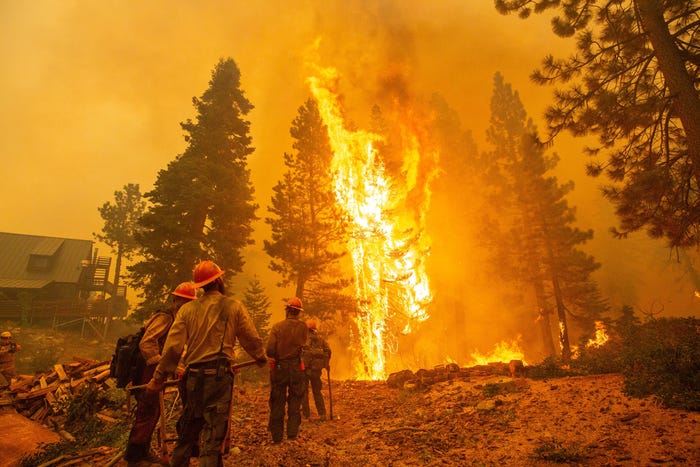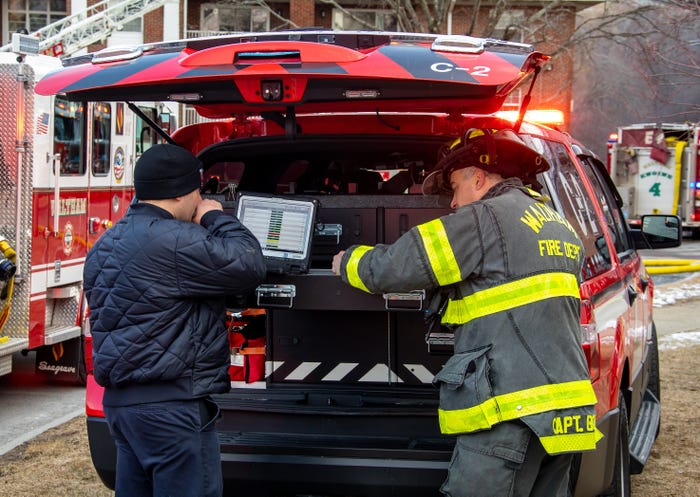The next piece of the puzzleThe next piece of the puzzle
Once the land mobile radio system is in place, the next big step is understanding how dispatch communications work.
November 1, 2010
Most land mobile radio systems have a fixed dispatch location that is staffed during normal hours of operation. For commercial businesses such as electricians, plumbers, concrete companies and delivery services, this is usually from early morning to early evening, five or six days a week. For transportation companies, public-safety agencies, and utility companies, dispatch normally is staffed 24 hours a day, 365 days per year. There is no such thing as holidays or off days for the 24/7 operations.
Many centers dispatch for more than one company or agency. In public-safety communications, this is more often the case than not. For really large operations, where there are hundreds, if not thousands, of units in the field at all times, the agency also will have the technical maintenance staff on duty on a 24/7 basis, too.
In public-safety applications, the dispatcher needs access to other agencies’ field units and dispatchers, so the dispatch equipment must have the capability to operate on the other agencies’ channels or talk groups. This month’s article will concentrate on the details that the design engineer will need to consider concerning dispatch communications.
The dispatch piece of an LMR system lets managers, planners and organizers talk to their colleagues in the field. A small agency often will require only very basic equipment for this function. For example, if the agency’s radio is operating on a simplex channel, then a small console — or a microphone and speaker connected to the base station — is sufficient for that operation. If a radio repeater is part of the system, then a portable radio (walkie-talkie) — or a mobile radio with an antenna emanating from its back side — and a good over-the-air connection to the system is all that is required for dispatch communications.
However, when an operation has multiple channels or multiple locations, and requires all channels to have dedicated dispatchers on duty at all times, console positions are required. A dispatch center can be as small as one position with one person operating the equipment. Or it can have multiple consoles (or console positions), with hundreds of channels and talk groups, that control radios over a very large geographic region. In some cases, this might be a worldwide operation. In all cases, there must be electronic interfaces that allow dispatchers to choose the channel or talkgroup over which communications will occur.
A dispatch center is more than just a collection of radio equipment in a building. It consists of the following items:
A console for each position being staffed;
A room for the central electronic equipment and interface radios;
Furniture to support the dispatch consoles;
Chairs for the dispatchers;
Nearby facilities so that a dispatcher never has to leave the vicinity when working alone;
Proper lighting and ergonomics for the dispatch room;
Food and drink facilities;
Backup power, camera, and voice/information logging systems;
A fire-protection system that safeguards both the people and equipment; and
A secure and safe location to enable 24/7/365 operations.
A design engineer will need to consider all of the above items when planning a new facility or retrofitting an existing dispatch center, as all of the pieces must fit together for the system to work properly. The radios usually are the least-important variable of the dispatch-center equation.
Let’s now examine some of the critical elements of dispatch operations.
Consoles. Consoles and console positions come in all shapes and sizes. The most basic console has 2 to 10 channels and quite a few lights and mechanical switches, while the most advanced consoles will have multiple high-end computer monitors that can control hundreds of channels anywhere in the world. The costs and features are directly proportional to the price tag.
The main function of the console is to allow a dispatcher to choose the channel(s) that will handle incoming and outgoing calls. In addition, the console will allow the dispatcher to monitor the audio of all of the channels that are part of the system. Most consoles have space for additional computer screens and keyboards so that the dispatcher has access to other systems and the Internet without interrupting the radio functions.
Remote desk-sets. In many systems, individuals only need to access one or two channels or talkgroups; in such cases, a small desk-set can provide that function instead of using a complete console position at that location. The desk-set consists of a small box in the shape of a standard desktop telephone, with a speaker instead of a touchpad in the center of the faceplate and a handset that is similar to a standard telephone handset, but with a push-to-talk (P2T) switch. The desk-set is able to interface to the main console’s central electronics controller or directly to a radio.
Link interfaces. There are four system configurations to control most radio base stations. These include:
Direct control,
Wireline DC remote control,
Wireline tone remote control and
Internet Protocol (IP) control.
The following details explain more about these configurations.
Direct control is where the microphone with a P2T switch is tied directly to the base station and the received audio comes out of the speaker or speaker jack of the radio. In most systems, the radio must be within 50 feet of the dispatcher.
The wireline interface between a console and the radio can be in one of two formats, and each of those can be in one of three configurations. The formats can be either:
DC remote control or
Tone remote control.
When the console and radio both are located on the same campus and there are direct cables between the two, then DC remote control interfaces will work, given some restrictions regarding distance.
When there is no DC continuity between the console and the radio, or when telephone leased lines or microwave links are being used for backhaul, then tone remote control will be necessary. This is a series of tones that will allow the console to key the radio, select the operating channel and disable the continuous tone coded squelch system (CTCSS) on shared radio channels, in order to monitor the channel(s).
Rather than pay for dedicated leased telephone lines, many systems are leveraging the Internet or the agency’s Intranet to control radio base stations. Newer radios have Internet Protocol, or IP, interfaces built into them, but universal adapters are available that can convert any radio to IP control. A local area network or Intranet can be used for those systems that have their own connectivity between the dispatch center and the radio sites.
The newer consoles and radio systems use software to remotely monitor operations and set system configurations, so managers no longer have to be in the same room — or even the same city, state or county — with the equipment to perform these functions. Software also is available that monitors system data and performance in real time, in order to detect system faults before operations are affected.
Another feature of the advanced consoles and radio systems is that the entire system can be reconfigured for emergency operation and interoperability with new groups when the need arises. All it takes are a few commands to the central controller or electronics from the system manager.
Also, there are cameras in some field units that can send real-time information to dispatch, which is stored locally. Consequently, dispatchers can assist field personnel with vital information without having to send additional resources to the operation. This saves time and lowers risks. This information — along with the corollary voice — can be recorded and stored in either analog or digital format.
The logging recorders used for this function reside in the equipment room of the dispatch center, or offsite, and can store Terabytes of information, depending on the operation. Analog recorders commonly are used in smaller operations and have limited quality and storage capability compared with digital recorders; today, most logging is digital and connected to the agency’s Intranet.
LMR dispatch and control systems can range from very simple to quite complex. There are similarities in all of the systems, but the more features and options that are desired, the more planning that is needed and the higher the price tag. Do not jump into this part of the system without fully knowing — and understanding — all of the available options.
Part 1: Class is in session: Basic LMR and FCC definitions
Part 2: Start at the beginning: Understanding LMR user needs
Part 3: The devil's in the details: Conducting a user-needs survey
Part 4: Decisions, decisions: Understanding the LRM procurement process
Part 5: Let's get started: System engineering begins with RF planning
Part 6: The lynchpin: Receiver planning and noise interference
Part 7: Connecting the dots: How to connect LMR sites
Part 9: Now the real work begins: How to select a suitable LMR site
Part 10: The bane of your existence: How to deal with RF interference
Part 11: Winning the battle: What causes radio frequency interference
Ira Wiesenfeld, P.E., is a consulting engineer who has been involved in the radio communications business since 1966. He is a senior member of the IEEE and has been a licensed amateur radio operator since 1963. He can be reached at [email protected].
Robert C. Shapiro, P.E, is the senior manager-systems engineering for PlantCML, an EADS Company. He serves on the TIA TR8 committee as the TSB-88.4-C task-group chair and is a senior member of the IEEE. He can be reached at [email protected].



